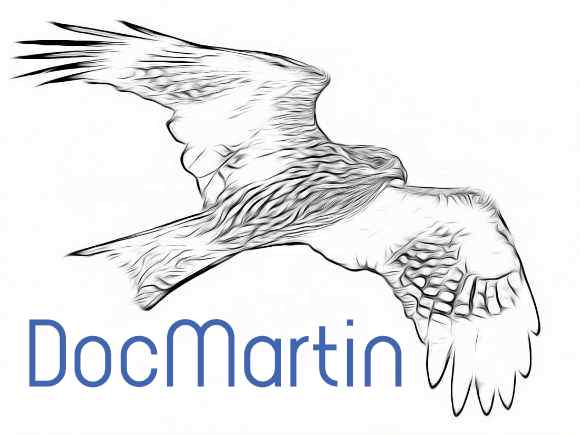- This topic is empty.
- AuthorPosts
- 19 October 2005 at 10:54 am #3252
just emailed this to a science journalist; may be of some interest:
I think exact data could be tough to come by: partly due to relative
dearth of info; also as flyways are rarely tightly defined. Some species
have tendencies to follow flyways more strongly than
others – such as birds of prey, which typically heavily dependent on
thermals, so can avoid sea crossings if possible.
Some waterfowl, too: I’ve seen geese travelling along east coast of
China, for instance.
For some/many species, can be more “broad front” migration.No nice, tight lines, then.
But that doesn’t mean all is random.
Instead, can have lines that broadly show what’s known – from
observations, ringing studies, and a smattering of radio tracking
studies.
If do these for groups of birds – waterbirds, say – get the rather
fuzzy “flyways” you’ll have seen already.But move towards species’ levels – and best if select some key species
– and should find clearer pictures.
Especially if start adding some timings, for when they’re on the move.Bar-headed Goose, say: inc Qinghai (and Chany Lake) – India movements.
– for this and other Qinghai birds, should become clear that they are
indeed sedentary, maybe even with some moving south, by July, when
Russia was hit by outbreaks.Common Pochard has become another species in news – mainly, it seems,
as it’s about the only one people have noted that breeds in bird flu
hit areas, migrates to west Europe.
For this, I think picture will be more complex, as a common species,
and widespread. Some reach Hong Kong each winter; so I guess the
“flyways” would really be just lots of lines radiating out towards
winter areas, from east Asia right across to western Europe. (Pretty
typical of waterfowl overall.)
Again, I’d figure movements should be around now; by November, becoming
fairly settled in winter areas.
(Many bird movements pretty much over by around end of November;
protracted cold weather during winter can cause further movements –
such as some ducks etc leaving the continent for UK, but these aren’t
annual.)
[even now, many shorebirds have ceased migrating – some that passed
through HK earlier likely in Australia by now; it’s the more cold
tolerant birds that are on the move at present, with real hardy ones
such as geese and swans showing tendency to move as lakes freeze]Timings remain important; I showed for 2003/04 they were massively at
variance with bird flu spread in e Asia.
Romania/Turkey fit bird migration timings, but doesn’t prove wild birds
responsible – why are only these two places in Eurasia apparently
affected (that we know of; Nial’s written of maybe a million ducks n
geese now in Korea, with no problems seen as yet)?
What of trade – where do farmers obtain their birds?; I haven’t seen
answers, and believe lack of focus on such questions, and wild birds as
maybe red herrings, could exacerbate problems.9 February 2006 at 8:44 am #3866after outbreak in Nigeria, Feb 2006, a little more:
– just saying “wild birds” and “flight paths” is woefully inadequate; not sure any piece of land not permanently covered by snow/ice does not lie under skies travelled by at least small numbers of birds. Though “flyways” tend to mean routes travelled by larger numbers of migrants, more akin to rivers of migratory birds.
Nigeria, for instance, indeed lies on flight paths.
Surely flyways here, too, especially along coast (I’m less familiar with migration there than in e Asia).
But these for birds from Europe – not from H5N1-hit areas of Russia.Migrants will fly minimum they need to, in order to maximise survival chances. Can involve long distances, but broadly those from northern hiemisphere will head south for winter if suitable destinations for enough birds.
Poyang Lake in e central China and Qinghai Lake in nw China (1700km apart) just reported to have had same H5N1 strain in wild birds (well, 2 strains in 6 ducks at Poyang; big outbreak Qinghai).
This said to show wild birds were the link.
Now, both have “wild birds”, both lie on “migration routes” [no part of China does not, tho are places with more distinct flyways). But, take a more detailed look, and does not appear they are linked by migrants.
Poyang a winter haunt for birds from Mongolia eastwards and northeastwards – I’ve studied some as they migrated along the coast at Beidaihe, east of Beijing [a huge distance from Qinghai]
– see eastern flyway map for Siberian crane at http://www.sibeflyway.org/Map-Eastern-web.html – gives some idea of routes Poyang birds follow, tho at least some mainly migrate just inland rather than along coastal route
Qinghai Lake a breeding ground for wetland birds wintering in India, sw China.Post edited by: martin, at: 2006/02/09 00:58
Post edited by: martin, at: 2006/02/09 01:57
Post edited by: martin, at: 2006/03/19 00:54
10 February 2006 at 9:28 am #3867Here’s a sketch map that may be of some use; comments inc how to improve it welcome.
10 February 2006 at 12:07 pm #3868Anonymous
Hello,
Thanks for the information. It’s more of what I was looking for. I did find another source on the internet that showed the “flyways” as sort of amorphous blobs that flow generally north and south like you describe.
It’s easy to see how H5N1 can move from flyway to flyway as they do tend to overlap very heavily. All it takes to pollute a new area with a suspect infectious agent is time and proximity.
If, as might be the case, this is what is happening, the mechanism looks like it’s there. But where’s the PROOF!!!
Regards,
N.
- AuthorPosts
- You must be logged in to reply to this topic.
